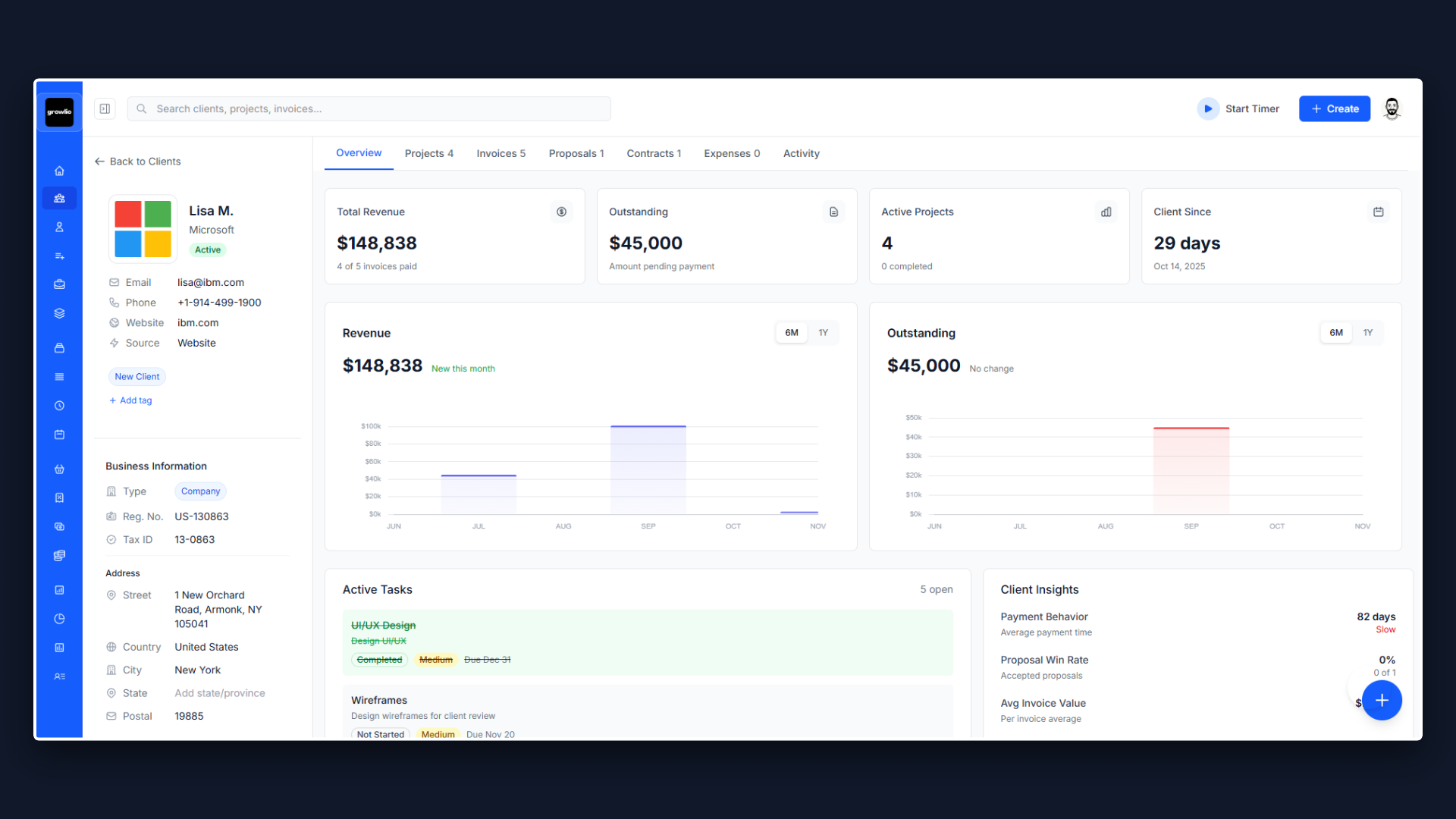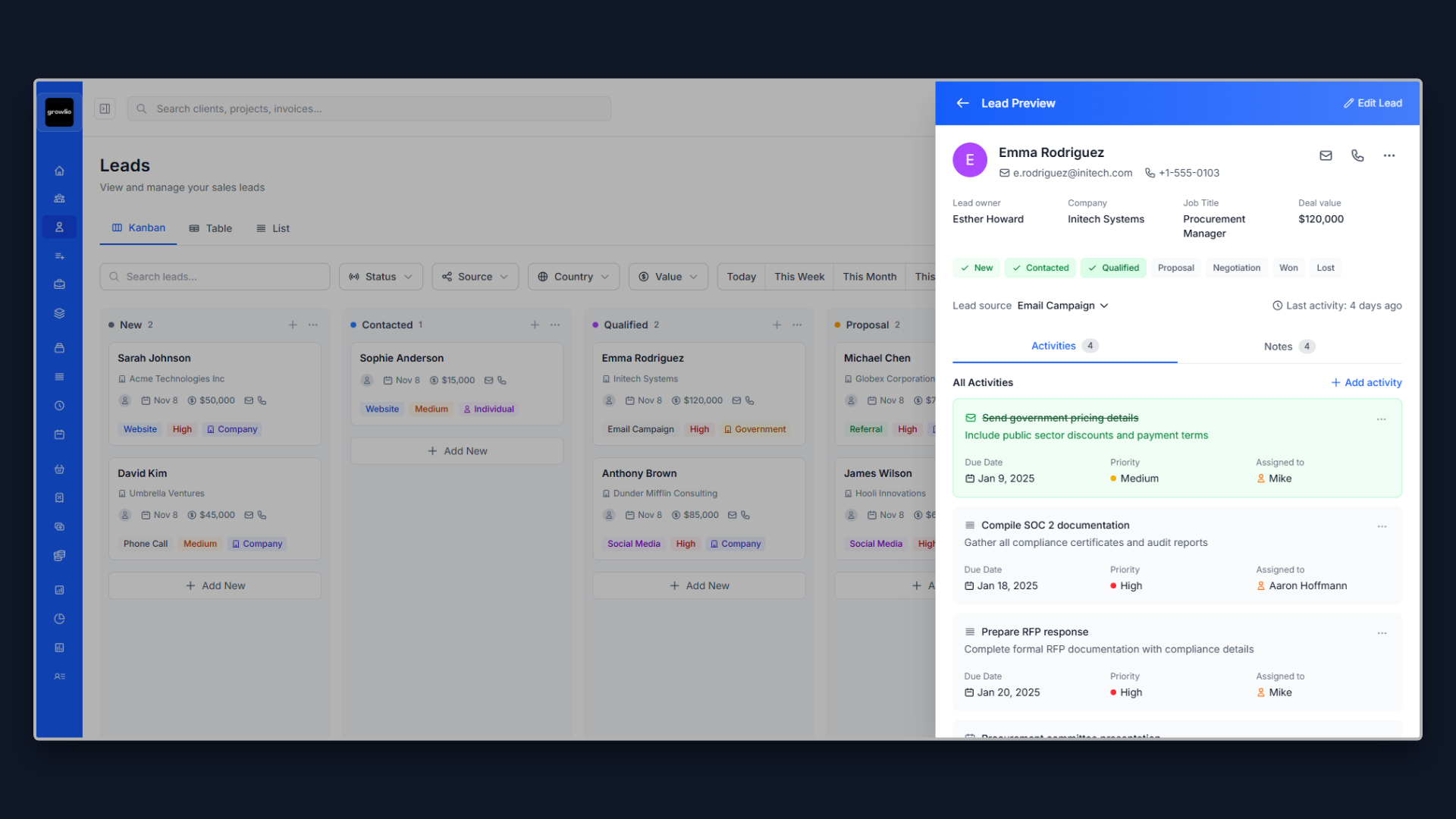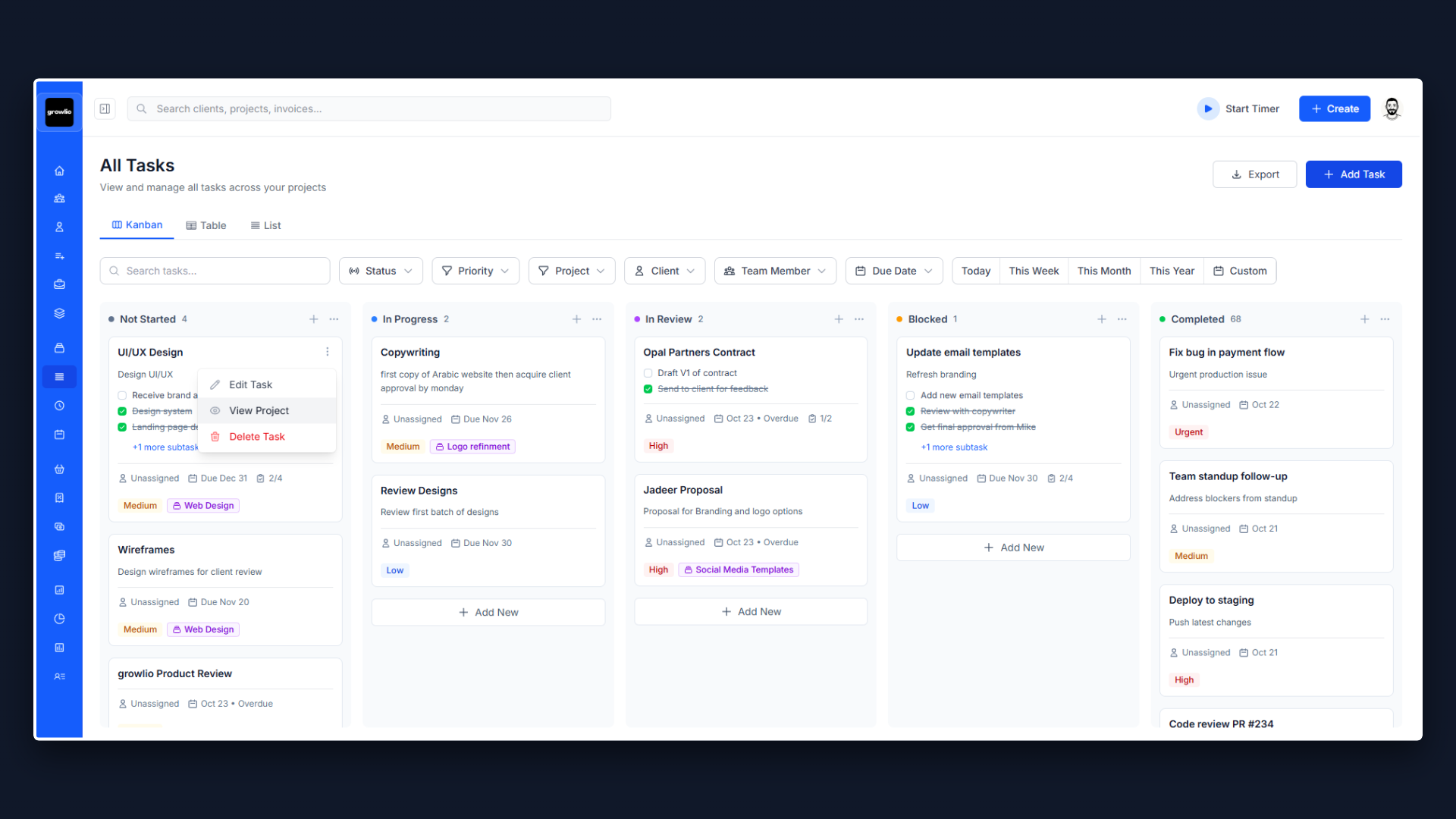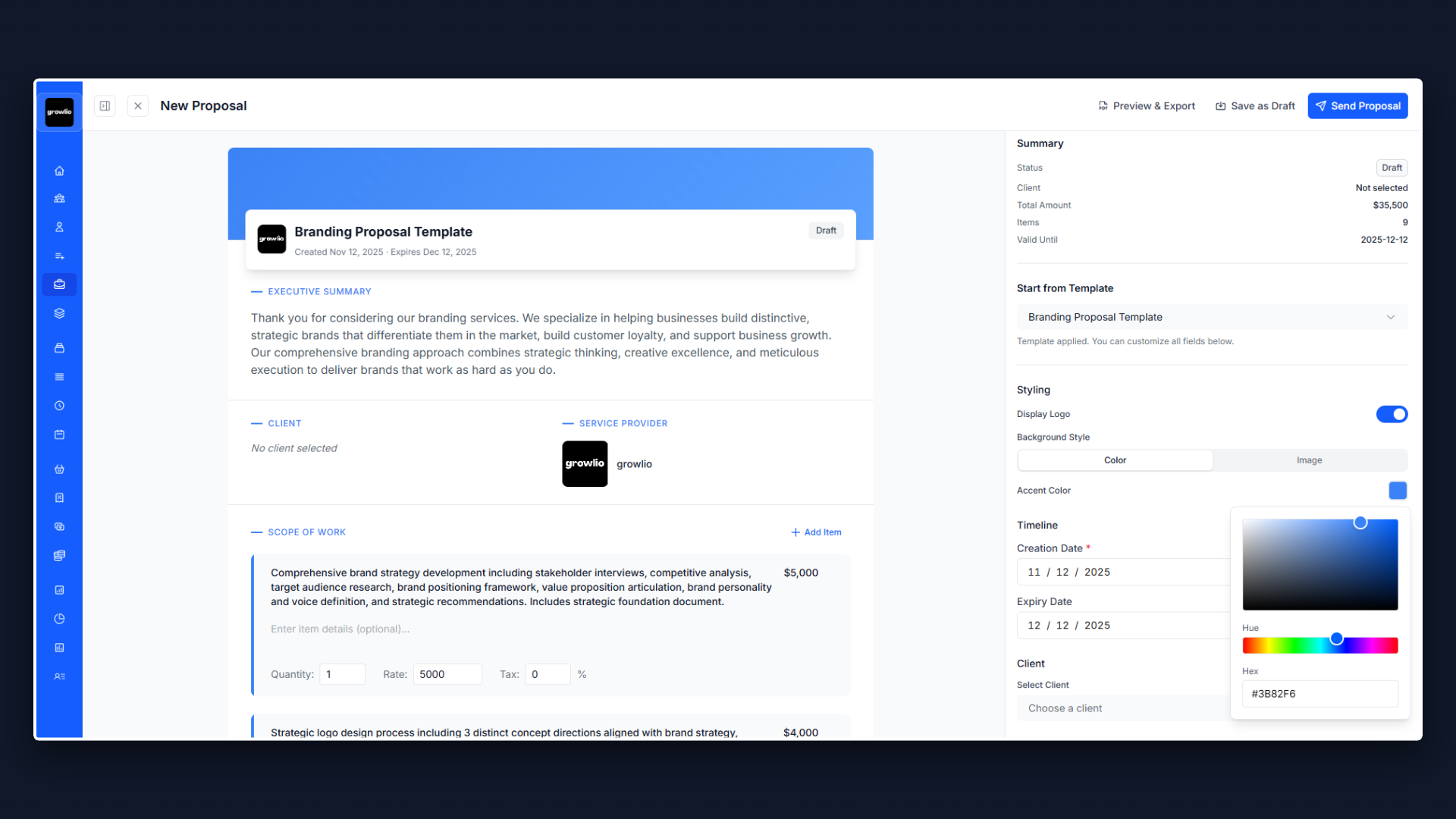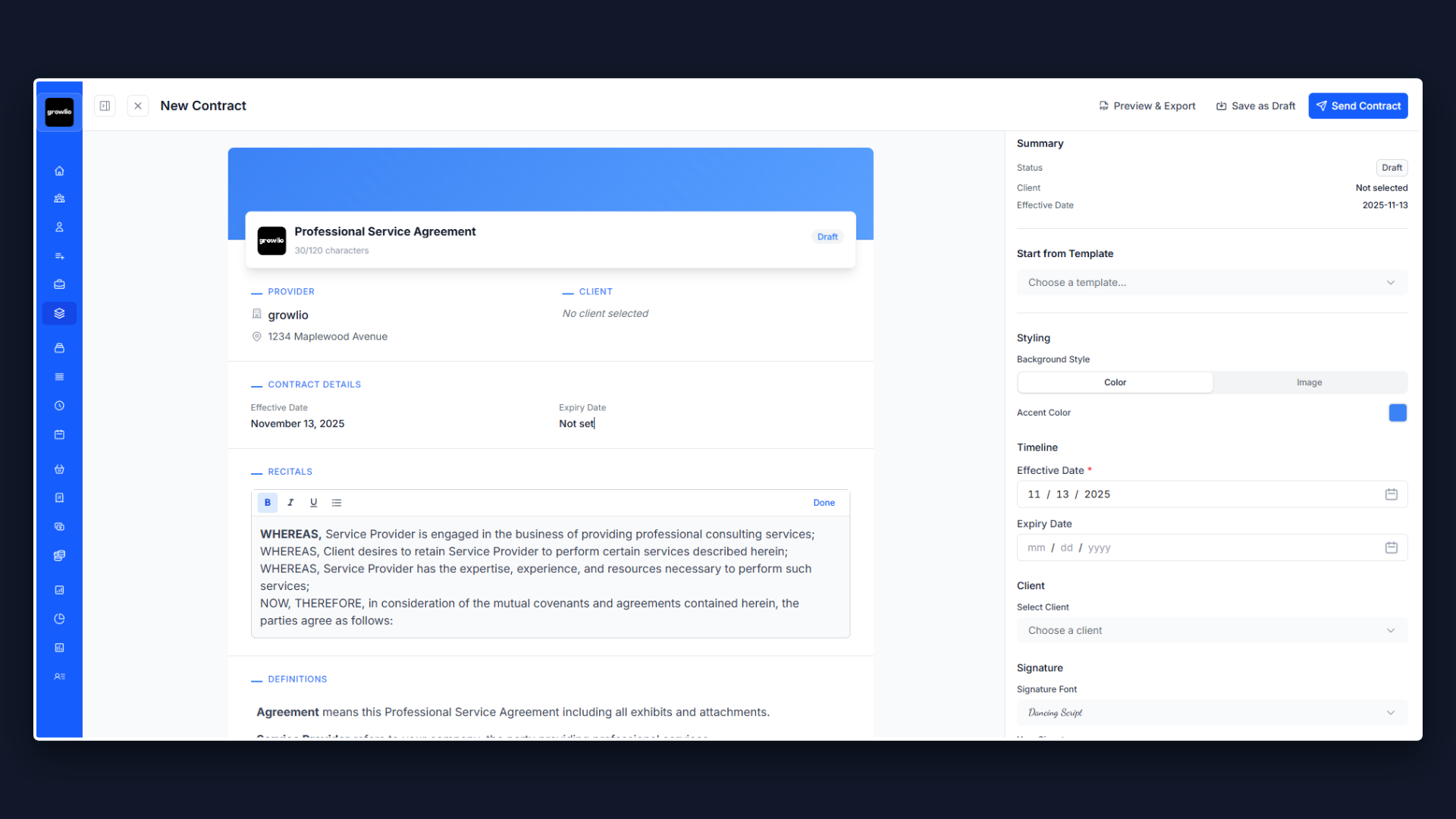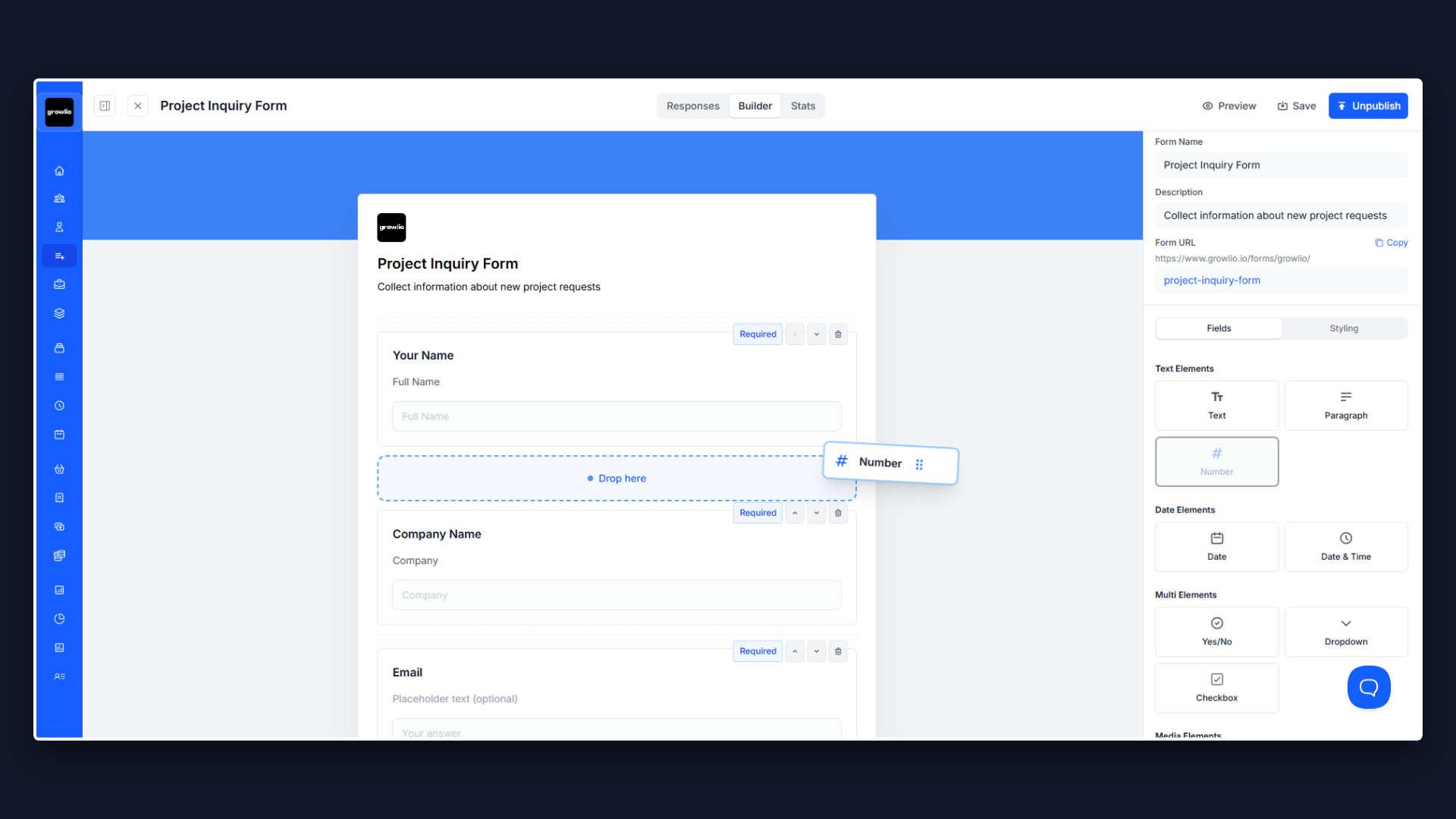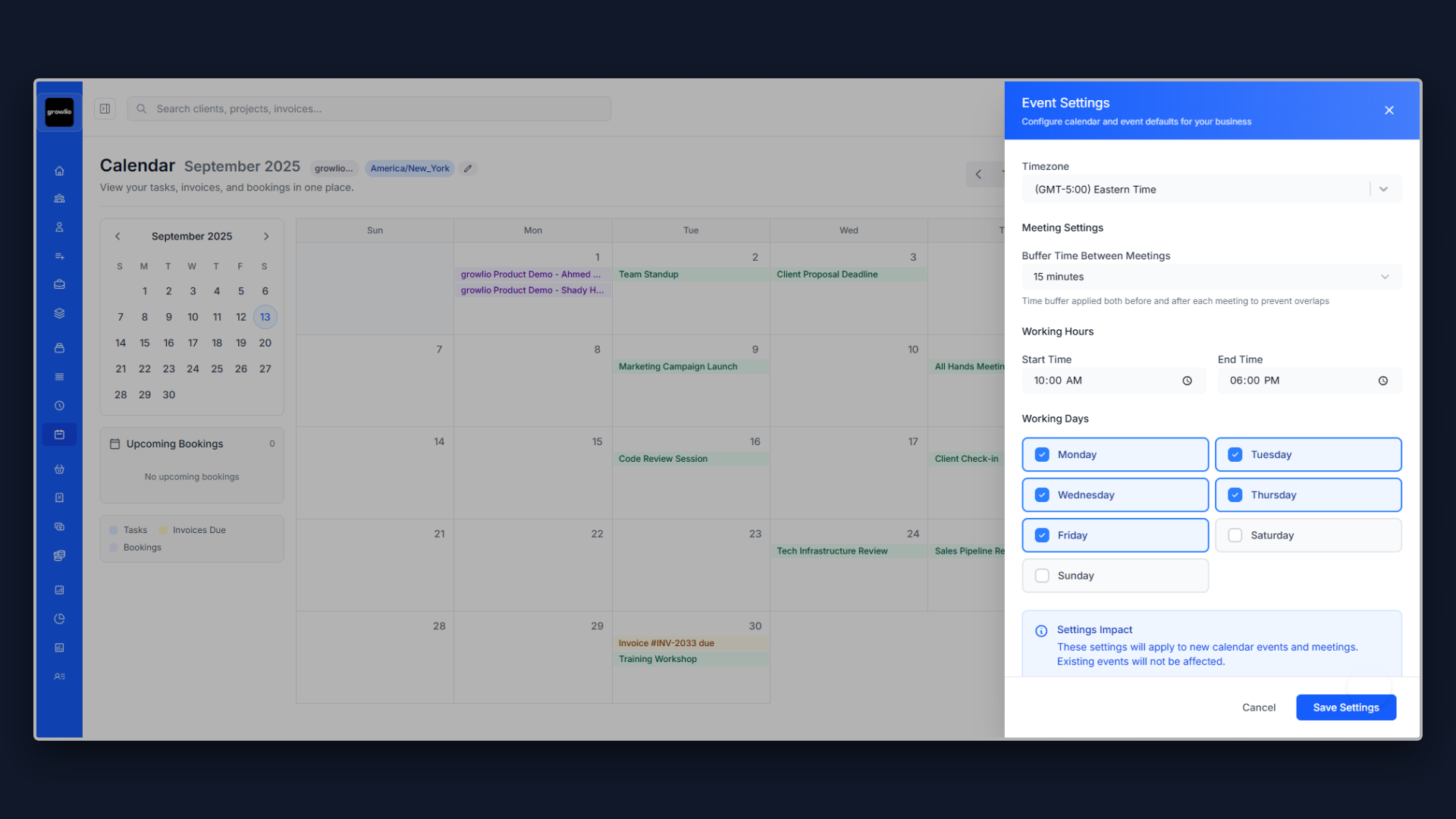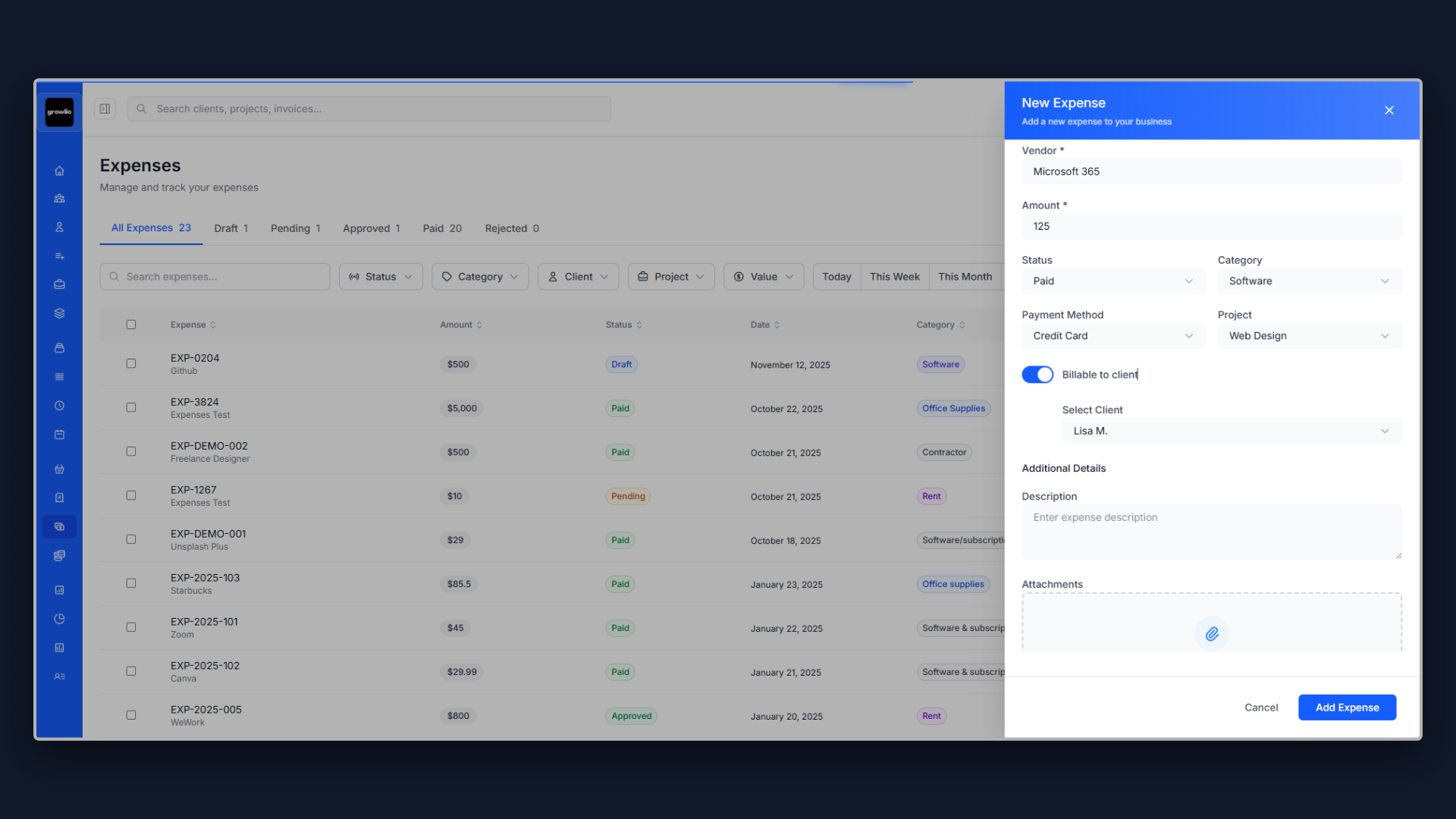Why Your Email Marketing Proposal Makes or Breaks Your Business
As an email marketing consultant or agency, you know that email generates $36 for every $1 spent—the highest ROI of any marketing channel. With over 4 billion daily email users, email marketing remains the most direct way to reach customers. But here's the harsh reality: even if you're exceptional at crafting campaigns and building automation sequences, you'll struggle to win clients if your proposals don't demonstrate your value clearly.
The email marketing industry generates over $10 billion annually, with 87% of B2B marketers using email as their primary content distribution channel and 59% of consumers saying marketing emails influence their purchase decisions. Yet many talented email marketers lose projects to competitors who simply write better proposals. This has nothing to do with your email marketing skills and everything to do with how you present them.
Your email marketing proposal is your first impression, your sales pitch, and your contract all rolled into one document. It needs to educate prospects who may not understand deliverability or segmentation while simultaneously proving you're the expert they need. This is a delicate balance that many get wrong.
1. Start With the Client's Current Email Performance, Not Your Services
The biggest mistake email marketers make is leading with a list of services: "We offer campaign design, automation setup, list segmentation..." Your prospect doesn't care about your services yet. They care about their problems.
Start your proposal by demonstrating you understand their specific email marketing situation. Are they sending emails sporadically? Is their open rate declining? Are subscribers not converting? Is their list growing but engagement dropping? Do they have no automation in place? Address these pain points explicitly.
For example: "Our analysis shows you're sending approximately 2 emails per month to your list of 8,500 subscribers with an average open rate of 14% and click rate of 1.2%. Industry benchmarks for your sector are 22% open rate and 3.5% click rate. This means you're leaving significant revenue on the table—if we improved your email performance to industry standards, you could generate an additional $15,000-$25,000 in monthly revenue from your existing list alone, without acquiring a single new subscriber."
This approach immediately shows you've done your homework and understand what's at stake. Now they're ready to hear your solution.
2. Include a Quick Email Audit to Demonstrate Your Expertise
Nothing builds credibility faster than showing you've already analyzed their email marketing. Include a brief audit section in your proposal highlighting 3-5 critical issues you discovered:
List Health Issues: No regular list cleaning (likely 15-25% inactive subscribers dragging down metrics), no re-engagement campaigns for dormant subscribers, missing double opt-in process (affecting deliverability), no segmentation strategy beyond basic demographics.
Campaign Strategy Gaps: Inconsistent sending schedule (2-3 emails some months, 0 others), no content calendar or strategic planning, emails are purely promotional (no value-driven content), missing key campaign types (welcome series, abandoned cart, post-purchase).
Deliverability Problems: Sender reputation score below optimal (likely due to low engagement), no proper email authentication (SPF, DKIM, DMARC setup), spam complaint rate above 0.1% threshold, using a generic "noreply" sender address.
Conversion Opportunities: No email automation sequences in place (leaving 30-40% of potential revenue uncaptured), weak or missing calls-to-action, not A/B testing subject lines or content, mobile optimization issues (60% of emails opened on mobile).
This mini audit serves multiple purposes: it proves you know what you're doing, it creates urgency by highlighting problems, and it makes your proposed solutions feel essential rather than optional.
3. Break Down Your Email Marketing Strategy Into Clear Phases
Email marketing has many components, but your proposal shouldn't be confusing. Break your strategy into clear, logical phases that clients can understand.
Phase 1: Foundation & List Audit (Week 1-2)
Complete email list audit and health assessment, list cleaning and removing inactive/invalid addresses, email platform setup and optimization, implementing proper authentication (SPF, DKIM, DMARC), segmentation strategy development, compliance review (GDPR, CAN-SPAM).
Phase 2: Essential Automations (Week 2-4)
Welcome email sequence (3-5 emails introducing new subscribers), abandoned cart recovery sequence (if e-commerce), post-purchase follow-up sequence, lead nurturing workflow for prospects, re-engagement campaign for inactive subscribers, birthday/anniversary emails (if applicable).
Phase 3: Campaign Strategy & Execution (Week 4 and ongoing)
Monthly content calendar with strategic email schedule, weekly or bi-weekly value-driven campaigns, promotional campaigns aligned with sales cycles, educational newsletters building authority, seasonal/holiday campaign planning, A/B testing program for continuous improvement.
Phase 4: Advanced Optimization (Month 3+)
Advanced segmentation based on behavior and preferences, personalization beyond first name, predictive sending time optimization, integration with CRM and sales pipeline, referral and loyalty program emails, comprehensive analytics and attribution modeling.
This phased approach makes email marketing feel manageable and shows you have a clear roadmap. It also allows you to break pricing into phases if needed, making the investment feel less overwhelming.
4. Set Realistic Expectations About Results and Timeline
One of the fastest ways to lose trust is overpromising results. Clients appreciate honesty about email marketing timelines, even if it means waiting longer for dramatic revenue increases.
Be explicit: "Email marketing delivers consistent, compounding results. Most businesses see improved open and click rates within 2-4 weeks as we clean lists and improve content. Revenue impact becomes measurable within 1-2 months as automations are implemented. The full impact—including advanced segmentation and optimization—typically manifests within 3-6 months."
Provide a realistic projection: "Based on your current list size and industry benchmarks, we project: Month 1-2: 30-50% improvement in open rates (from 14% to 18-21%), 50-100% improvement in click rates (from 1.2% to 2-3%), foundation automations generating $3,000-$6,000 in recovered revenue. Month 3-4: Open rates reaching industry standard (22-25%), click rates at 3-4%, comprehensive automation suite generating $8,000-$12,000 monthly. Month 5-6: Advanced personalization driving 25-30% open rates, 4-5% click rates, total email revenue of $15,000-$25,000 monthly."
These numbers may seem conservative, but they're believable. Once you exceed these expectations, your client will be thrilled. If you promise to double revenue in 30 days and fail to deliver, you'll lose the client.
5. Explain Your Email Copywriting and Design Approach
Many clients don't understand what makes email copy effective. Use your proposal to educate them on your strategic approach.
Explain that effective email copywriting involves: crafting subject lines that spark curiosity without clickbait (targeting 40-50 characters), writing scannable content with short paragraphs and bullet points, leading with value before asking (80/20 rule—80% value, 20% promotion), using conversational tone that builds relationship, including one clear call-to-action per email, and personalizing beyond "Hi [First Name]" with behavior-based content.
For design: "Our email designs are: mobile-first (60% of emails opened on phones), brand-consistent with your visual identity, accessibility-friendly with proper contrast and alt text, optimized for quick scanning with hierarchy and white space, balanced between images and text (avoiding spam filters), and tested across all major email clients (Gmail, Outlook, Apple Mail, etc.)."
Give specific examples: "Instead of a subject line like 'Check out our latest products,' we'll test options like 'Sarah, you left something behind' (abandoned cart) or 'The mistake 90% of [industry] businesses make' (educational content). These approaches increase open rates by 20-40% compared to generic promotional subject lines."
This demonstrates strategic thinking and shows you understand email marketing psychology.
6. Address Email Automation and Sequences Specifically
Email automation is where the real revenue lives, but many businesses don't understand its value. Educate your prospect.
Explain the importance: "Email automation generates 320% more revenue than non-automated campaigns because it delivers the right message at the right time based on subscriber behavior. Once set up, automations work 24/7 without additional effort—they're your always-on sales team."
Outline essential automations: "We'll implement: Welcome Series (3-5 emails introducing your brand and setting expectations—generates 4x more orders than single welcome email), Abandoned Cart Recovery (3-email sequence recovering 15-30% of abandoned carts worth $5,000-$15,000 monthly for most e-commerce), Browse Abandonment (following up when visitors view products but don't add to cart), Post-Purchase (thank you, product education, cross-sell sequence), Win-Back (re-engaging subscribers who haven't opened in 60-90 days)."
Provide ROI context: "For a business with 10,000 subscribers and $100,000 monthly revenue, proper automation typically generates an additional $20,000-$40,000 annually. The ROI on automation setup is typically 500-1000% within the first year."
This helps clients see automation as an investment, not an expense.
7. Explain Your List Growth Strategy
Clients often want to grow their lists but don't know how to do it with quality subscribers. Address this proactively.
Explain your quality-focused growth approach: "We focus on growing your list with engaged, qualified subscribers—not just numbers. Quality subscribers are worth 10x more than unengaged addresses padding your list size."
Outline growth tactics: "We'll implement: strategic lead magnets (ebooks, checklists, templates) targeting your ideal customer, optimized signup forms on high-traffic pages, exit-intent popups with compelling offers, content upgrades within blog posts, gated resources and tools, social media promotion of email-exclusive content, and partnership collaborations for co-marketing opportunities."
Set growth expectations: "Based on your website traffic and industry, we project adding 200-400 qualified subscribers monthly through organic growth tactics. With paid promotion (ads driving to lead magnets), growth can accelerate to 500-1,000+ monthly. We track not just list growth, but engagement rates of new subscribers to ensure quality."
Address list hygiene: "We'll also regularly remove inactive subscribers—this seems counterintuitive but actually improves deliverability and engagement rates. A list of 8,000 engaged subscribers is far more valuable than 15,000 with half being dead weight."
8. Address Email Deliverability and Compliance
Deliverability is critical but often misunderstood. Use your proposal to demonstrate your technical expertise.
Explain deliverability fundamentals: "Email deliverability determines whether your emails reach the inbox or spam folder. We ensure optimal deliverability through: proper email authentication (SPF, DKIM, DMARC records), maintaining sender reputation through engagement, regular list cleaning removing bounces and complaints, avoiding spam trigger words and tactics, warming up new sending domains gradually, and monitoring blacklists and deliverability scores."
Address compliance: "We ensure full compliance with regulations: CAN-SPAM Act (clear unsubscribe, physical address, honest subject lines), GDPR (consent, data protection, right to be forgotten), CASL for Canadian subscribers, and double opt-in for maximum protection and engagement."
Provide reassurance: "We monitor deliverability metrics constantly. If your sender reputation drops or spam complaints increase, we immediately investigate and resolve the issue. Our goal is 98%+ deliverability to the primary inbox."
This technical knowledge builds trust and differentiates you from amateurs.
9. Explain Your Analytics and Optimization Process
Clients need to understand how you'll measure success and continuously improve. Be specific about your data-driven approach.
Explain key metrics you track: "We monitor metrics that matter: Open Rate (industry benchmarking and trend analysis), Click-Through Rate (engagement with your content), Conversion Rate (subscribers taking desired actions), Revenue Per Email (direct attribution to campaigns), List Growth Rate (new subscribers minus unsubscribes), Deliverability Rate (successful inbox delivery), and Engagement Over Time (identifying when subscribers lose interest)."
Outline your testing program: "We continuously A/B test: subject lines (testing 2-3 variations per campaign), send times (finding optimal days and times for your audience), email copy and length, call-to-action placement and wording, design variations, and personalization tactics."
Provide reporting: "You'll receive monthly detailed reports showing: campaign performance with benchmarking, automation revenue attribution, list health metrics, growth and engagement trends, deliverability and technical health, top-performing emails and why, and strategic recommendations for the next month."
This analytical rigor shows you're focused on results, not just sending emails.
10. Include Case Studies and Proof of Results
Nothing sells like results. Include 2-3 brief case studies in your proposal showing results you've achieved for similar clients.
Format them simply: Client: E-commerce business in health and wellness space. Challenge: 12,000 subscribers, 11% open rate, minimal email revenue, no automations. Strategy: List cleaning, welcome and abandoned cart automations, bi-weekly value campaigns, segmentation by purchase history. Results: Open rate increased to 28%, click rate from 0.9% to 4.2%, email revenue grew from $3,000/month to $22,000/month (633% increase), automations generating 65% of email revenue.
If you're new to email marketing and don't have client results yet, you can reference: your own newsletter or email list performance, personal projects or side businesses, pro bono work for nonprofits or local businesses, or results from any internships or previous employment.
Even one solid case study is better than none. It makes your promises feel real and achievable.
11. Transparent Pricing That Reflects Value
Pricing email marketing services can be challenging. However, vague pricing makes clients nervous.
Provide clear pricing tiers or packages: Starter Email Package - $1,200/month: List audit and cleaning, essential automations (welcome, abandoned cart), 2 monthly campaigns (newsletters or promotional), basic segmentation, monthly reporting. Growth Email Package - $2,500/month: Everything in Starter, plus comprehensive automation suite (5-7 sequences), 4-6 monthly campaigns, advanced segmentation by behavior, A/B testing program, quarterly strategy sessions. Premium Email Package - $4,500/month: Everything in Growth, plus 8-10 monthly campaigns, advanced personalization and dynamic content, dedicated account manager, weekly optimization and testing, integration with CRM and sales pipeline, custom automation development.
This tiered approach gives clients options and helps them see the value at each level. It also makes upselling easier as they see results.
12. Make Next Steps Crystal Clear
Don't leave your prospect wondering what happens next. End your proposal with a clear call to action and process.
"Ready to turn your email list into a consistent revenue engine? Here's how we get started: Step 1: Sign the proposal and return it by [date]. Step 2: We'll schedule a kickoff call within 48 hours to discuss your brand, current email setup, and goals. Step 3: Our team begins your email audit and platform setup immediately. Step 4: First automations go live within 2 weeks, with first campaign sending within 3 weeks. Questions? Schedule a call with me at [calendar link] or reply to this email."
This removes friction and makes it easy for prospects to say yes. The clearer you make the path forward, the more likely they are to take it.
Final Thoughts on Email Marketing Proposals
Your email marketing proposal isn't just a formality—it's a sales tool, an educational resource, and a trust-building document. The email marketers who win the most clients aren't always the best at design or copywriting; they're the best at explaining email strategy in a way that makes sense to business owners.
Take the time to customize each proposal for your prospect. Reference their specific email metrics, list size, and industry benchmarks. Show that you've done the research. Demonstrate your expertise through an email audit. Set realistic expectations about revenue growth. And make it easy to say yes.
Remember: a great email marketing proposal proves you understand their business, demonstrates you have a clear strategy for growth, shows evidence you can deliver revenue results, and makes the investment feel worthwhile. Get these elements right, and you'll close more deals—even if your competitors have fancier designs or charge less.
